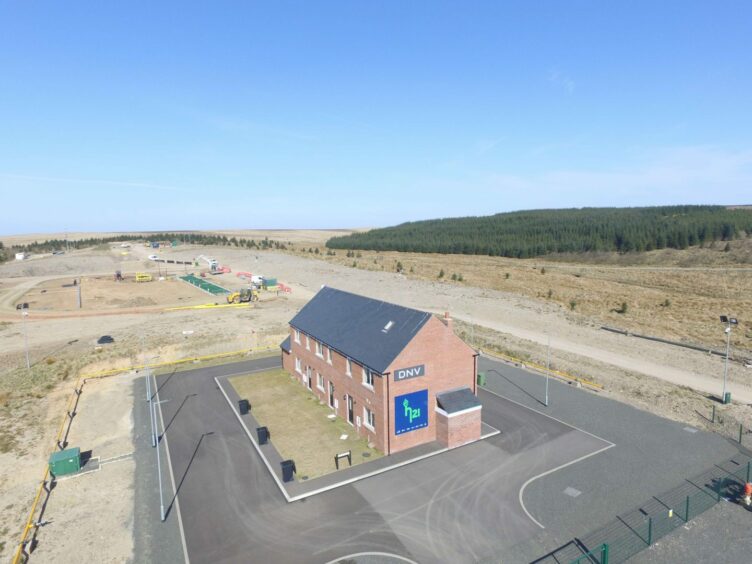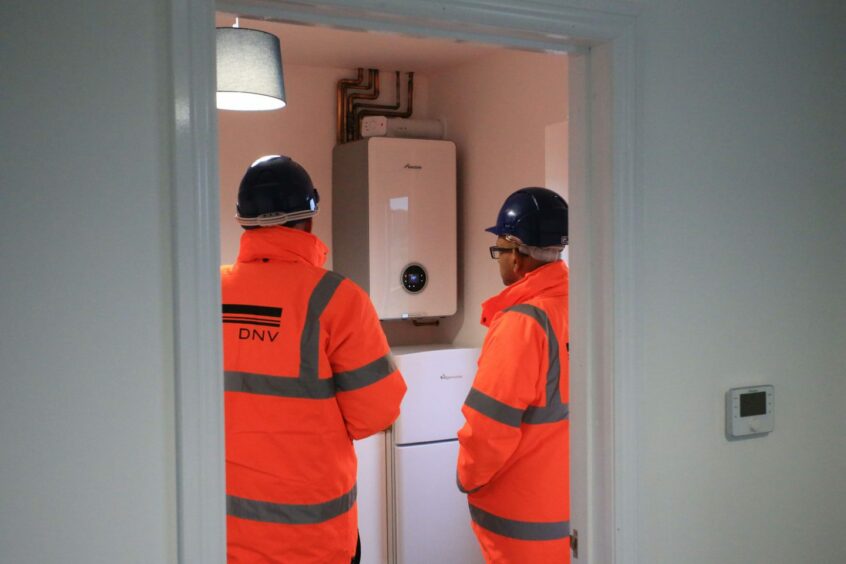
In the search for net zero, decarbonisation of the gas network will play a central role.
As we wean ourselves off fossil fuels, natural gas will have to be replaced by greener alternatives such as hydrogen. A government decision on the use of hydrogen is due in 2026 and metal pipelines in the distribution network are already being replaced with polyethylene pipes for safety reasons and these are perfect for repurposing with hydrogen. But there are still many challenges to progress.
Someone who knows more than most about this issue is Sarah Kimpton. The Vice President, Energy Transition & Innovation Development, at risk management experts DNV is heavily involved in finding solutions to the issues presented by moving the gas network onto hydrogen.
Sarah says: “There’s a big programme to replace old iron pipes with polyethylene and once they’re in the network they’ve got a lifetime of about 80 to 100 years so it’s good for the distribution network close to people’s homes. But if you go upstream to the higher pressure tiers, where you start to get metallic pipelines, then that’s where the challenges lie and where we need more information.”

DNV has already been working with NGN, SGN, Cadent and Wales & West demonstrating how to safely repurpose the gas distribution networks for 100% hydrogen but we still need to demonstrate this for some of the higher-pressure tiers.
To address this challenge DNV is working with National Grid. They are taking decommissioned assets from the National Transmission System and building a test loop at their Spadeadam facility in Cumbria. They will then run hydrogen/natural gas blends and 100% hydrogen through them to check compatibility and safety.
However, Sarah adds: “It’s not just pipelines. There are lots of other parts of the system that need to be tested for hydrogen such as valves, pressure let-down equipment, compressors and measurement equipment.”
Another obstacle to progress is having the infrastructure in homes ready for the switchover. At present appliances such as gas boilers can’t function with 100% hydrogen. However, many manufacturers are designing hydrogen-ready boilers.
Sarah says: “People change their appliances about every ten years so there will be a natural turnover if you get hydrogen-ready appliances available. But that won’t happen until the decision in 2026 on the future of hydrogen in the homes. So that’s why we’re doing all this work trying to demonstrate how to make hydrogen as safe as natural gas.”
There’s also the issue of how to store the hydrogen. With renewable energy from wind turbines or solar power only working when the winds blowing and the sun’s shining, low carbon hydrogen will be vital to meet demand. With no international supply chain for the fuel, we will be reliant on domestic reserves, making hydrogen storage vital to net zero.

But all of this relies on there being the public engagement and political will to push ahead. At present the all-important financial community is struggling to justify investment in hydrogen projects.
Sarah says: “Even if all the technology is in place, it’s still not convincing to investors that hydrogen projects are bankable assets. So you need government support to set it on its way. I think financial leadership and demonstrating commercial readiness is one of the biggest challenges.”
One step which is being tested to pave the way for a low carbon future is blending hydrogen into the energy network. Two trials have been run in England where 20% hydrogen was put into the gas network. Consumers didn’t notice the difference in the operation of their boilers, cookers and fires.
Sarah says: “If we can tell the public, ‘you’ve already experienced 20% hydrogen blends in your network,’ they start to feel happy with it. It is the first step on the journey to demonstrating that hydrogen can be produced, handled and delivered safely and that customers get the heating, hot water and cooking that they need. There’s lots we can do to stimulate demand for hydrogen.”
Looking to the future, Sarah is optimistic but is aware there is no time to lose.
She says: “If we can solve the problem of the price of hydrogen the energy transition can be achieved. But we need to get cracking. We’ve got to have this job completed in 2050 not started in 2050.”
Recommended for you
